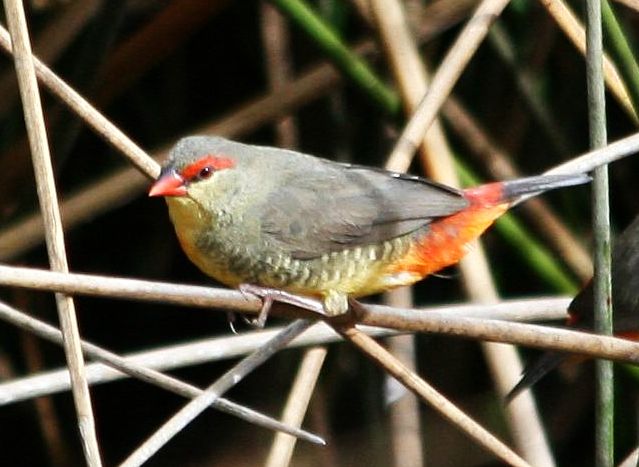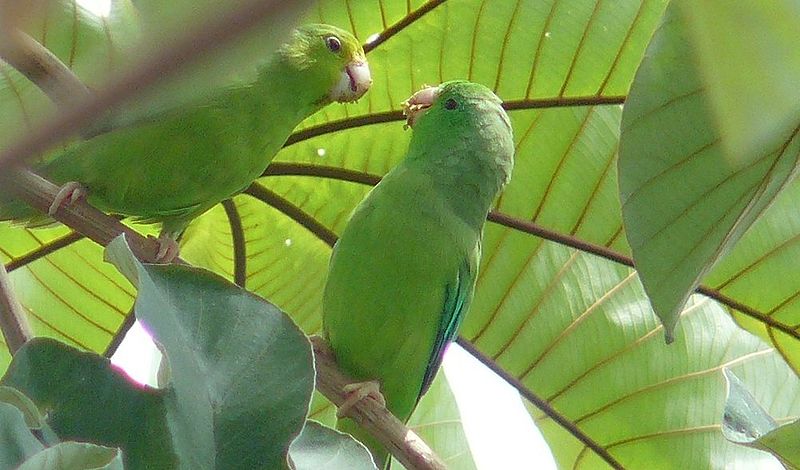 The Zebra Waxbill, Amadava subflava (also known as the Gold or Orange-Breasted Waxbill), is one of the tiniest of all African birds available to aviculturists. With their bright yellow bellies and brilliant red rumps, the males are a sight to behold. A mere 3 to 3.5 inches in length, they are a delight to keep and breed, and quite hardy as well.
The Zebra Waxbill, Amadava subflava (also known as the Gold or Orange-Breasted Waxbill), is one of the tiniest of all African birds available to aviculturists. With their bright yellow bellies and brilliant red rumps, the males are a sight to behold. A mere 3 to 3.5 inches in length, they are a delight to keep and breed, and quite hardy as well.
Natural History
The Zebra Finch is found throughout much of sub-SaharanAfrica. It favors grasslands and lightly-wooded savannas (please see photo), but has adapted to farms and village outskirts as well. Grass-seeds and insects comprise the bulk of its diet.
A larger and more colorful subspecies, Clarke’s Waxbill, Amadava subflava clarkii, occupies the southern portion of the range. Unfortunately, it is not common in private or public collections. Read More »
 That Bird Blog – Bird Care and History for Pet Birds
That Bird Blog – Bird Care and History for Pet Birds



